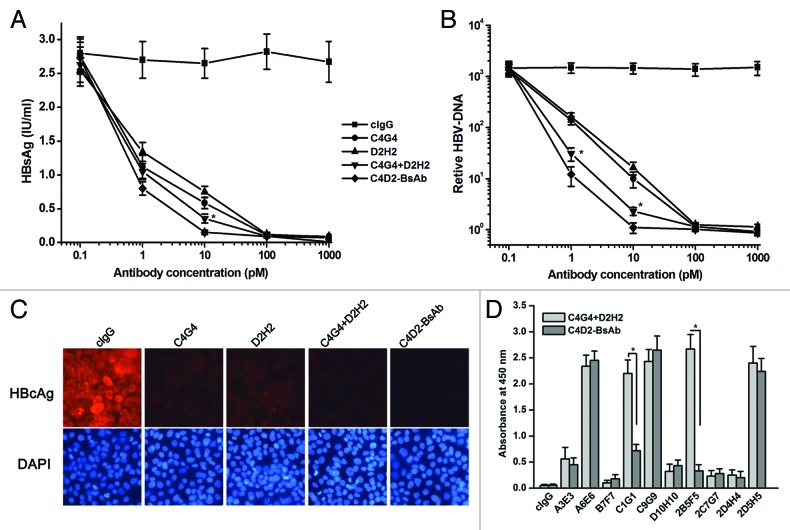Figure 5. HBV-neutralizing activity of the bispecific antibodies. (A) Quantification of HBsAg levels at 7 d after infection with HBV pretreated with different dose of C4G4, D2H2, C4G4 plus D2H2 and C4D2-BsAb. (B) Quantification of relative HBV-DNA copies at 7 d after infection with HBV pretreated with different dose of C4G4, D2H2, C4G4 plus D2H2 and C4D2-BsAb. (C) Immunohistochemisty staining with anti-HBcAg antibody in HepaRG cells at 7 d after infection with HBV pretreated with C4G4, D2H2, C4G4 plus D2H2 and C4D2-BsAb. (D) The binding of C1G1 and 2B5F5 to HBsAg was markedly reduced when HBsAg was preincubated with C4D2-BsAb but not with C4G4 plus D2H2. C4G4 plus D2H2, or C4D2-BsAb was first incubated with biotin-HBsAg. The mixtures were then transferred to the plates coated with anti-HBsAg antibodies A3E3, A6E6, B7F7, C1G1, C9G9, D10H10, 2B5F5, 2C7G7, 2D4H4 and 2D5H5. After 2 h incubation, the plates were washed and biotin-HBsAg bound were detected with HRP-strepavidin conjugated. Results were shown as mean ± SD of three independent experiments. *p < 0.05.

An official website of the United States government
Here's how you know
Official websites use .gov
A
.gov website belongs to an official
government organization in the United States.
Secure .gov websites use HTTPS
A lock (
) or https:// means you've safely
connected to the .gov website. Share sensitive
information only on official, secure websites.
